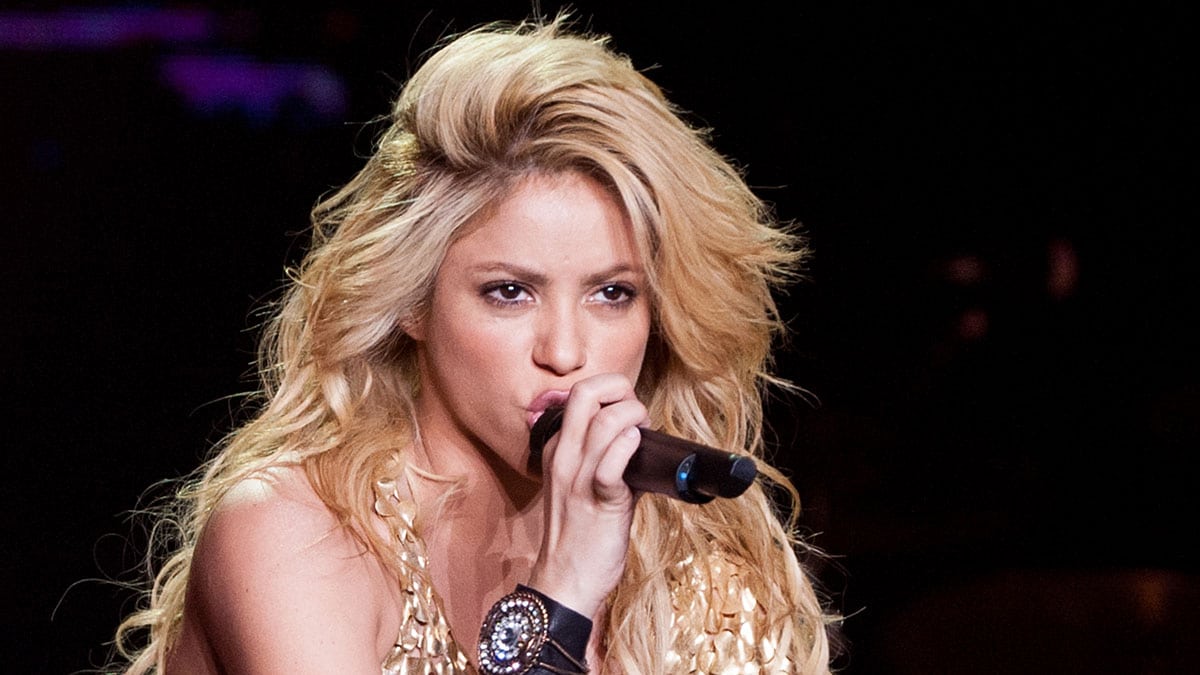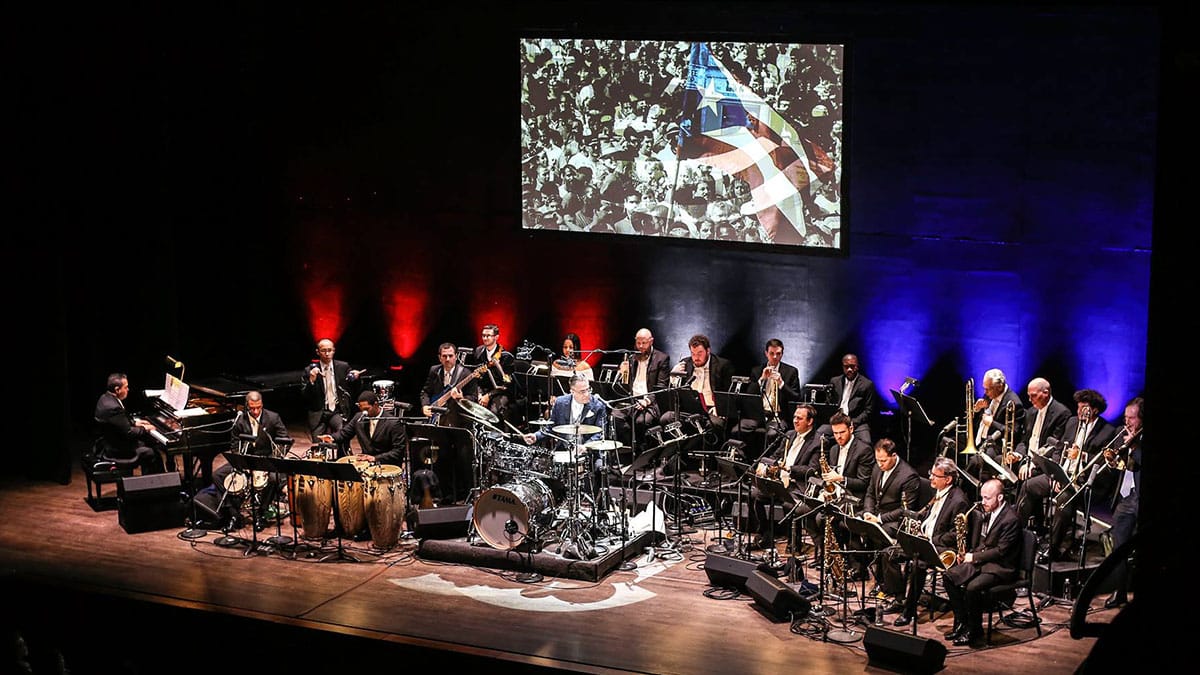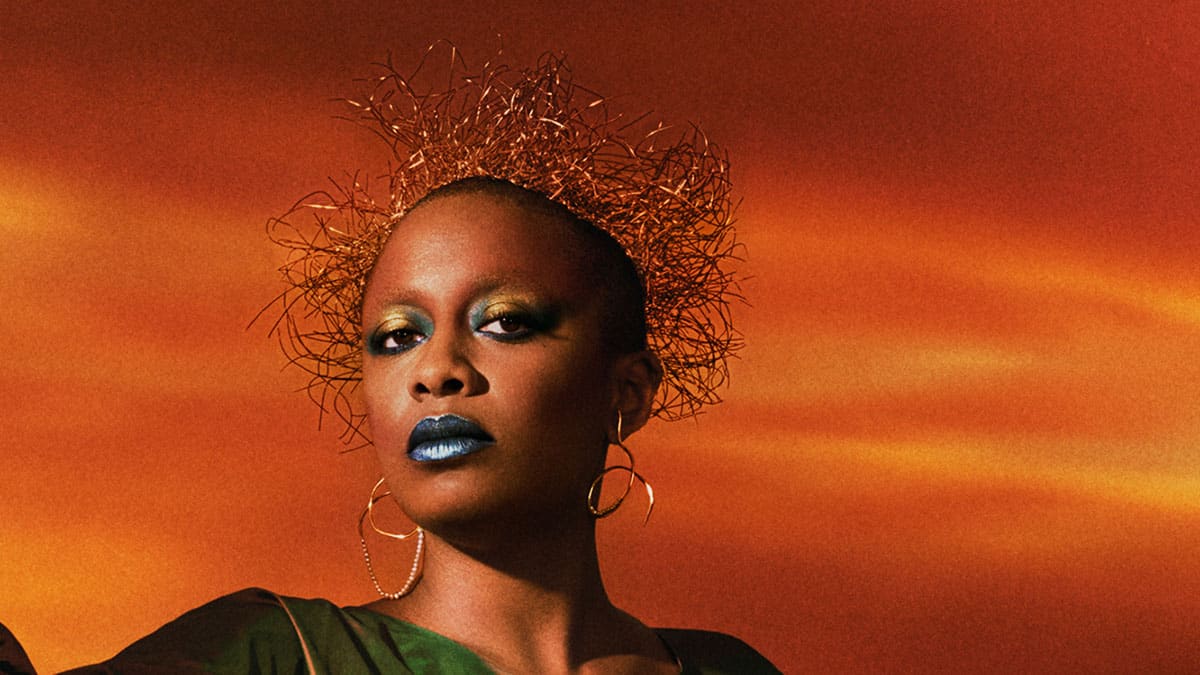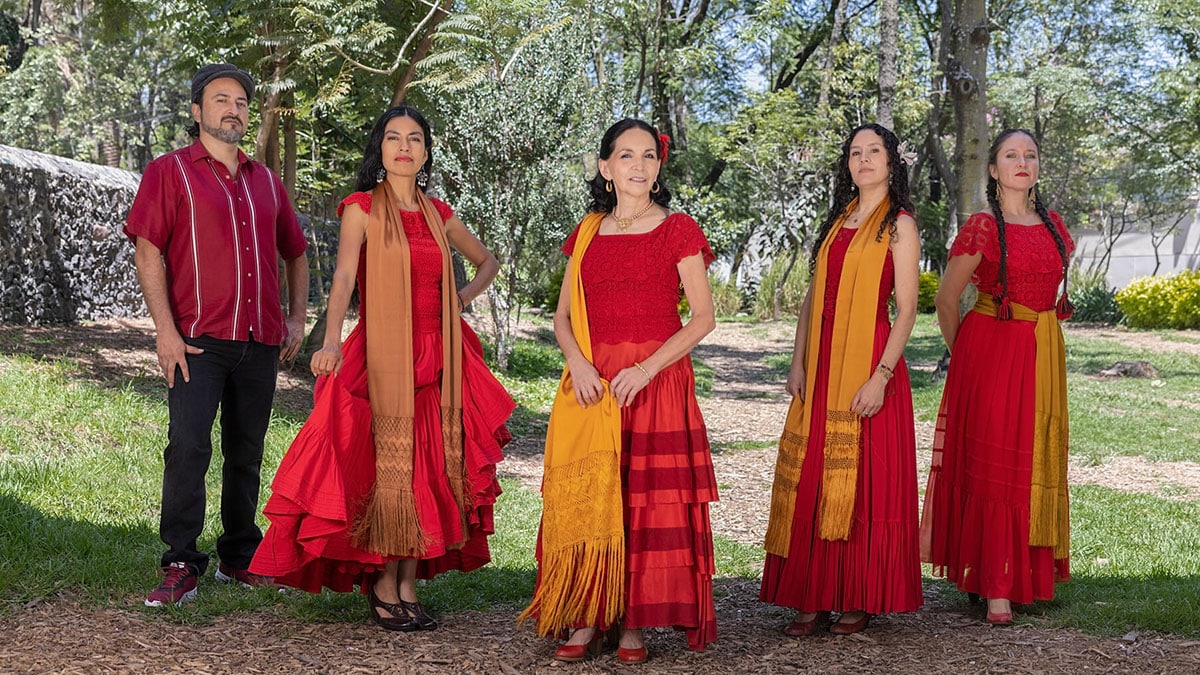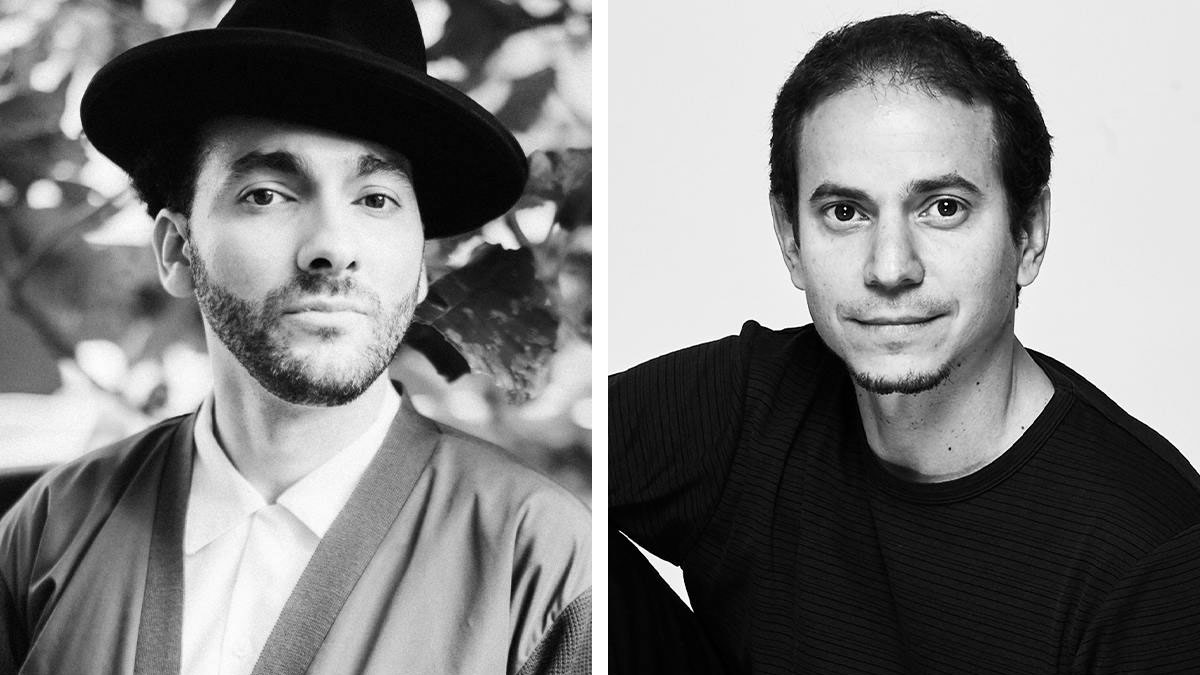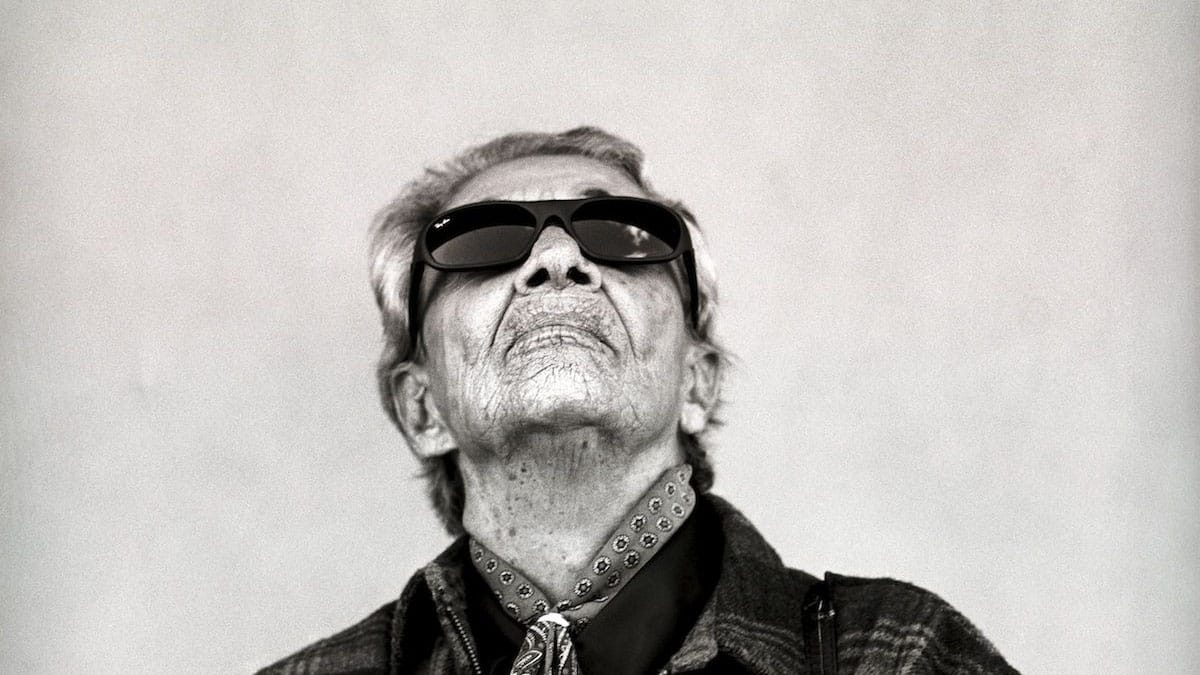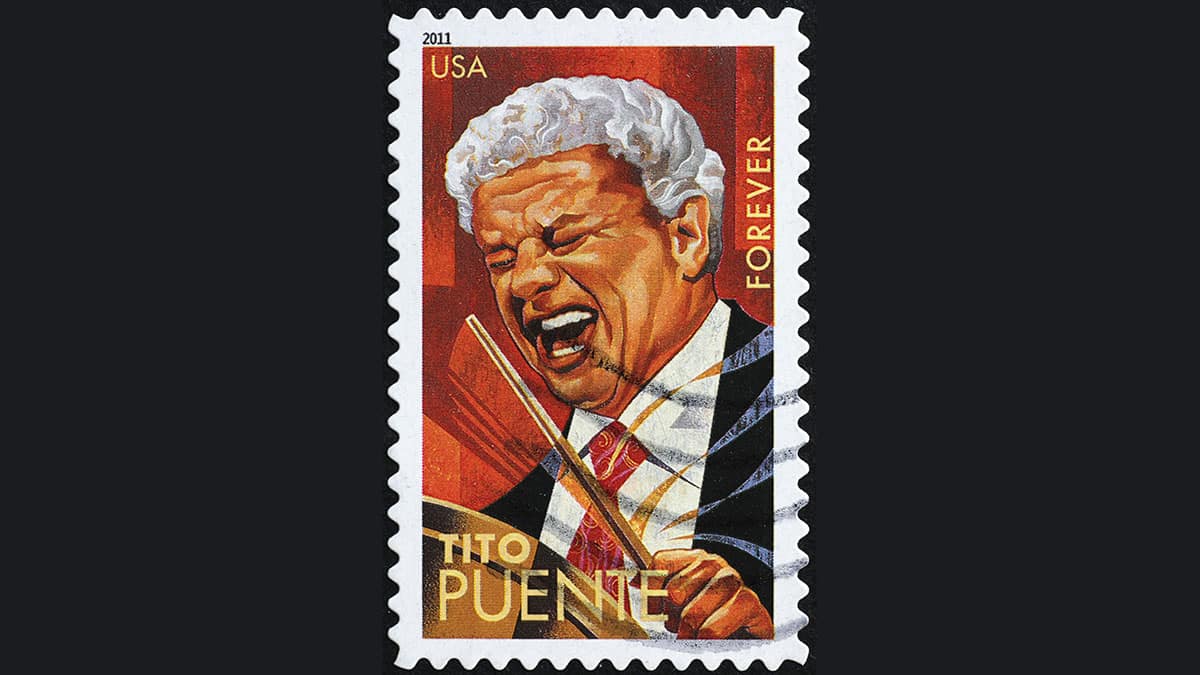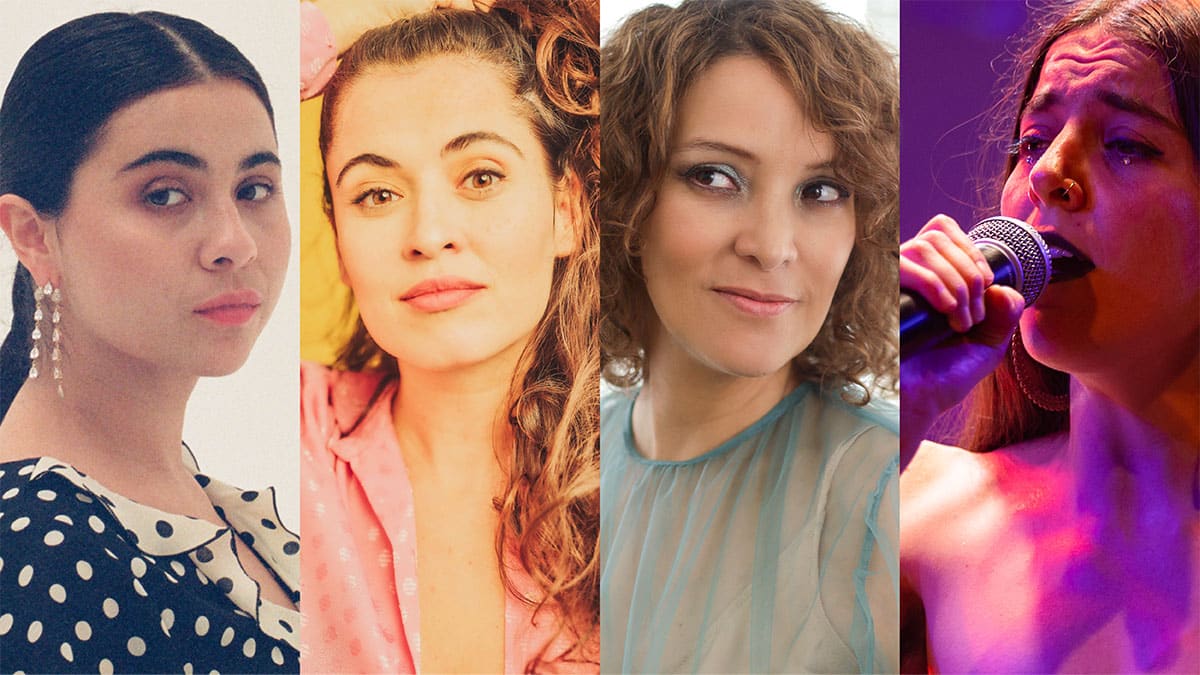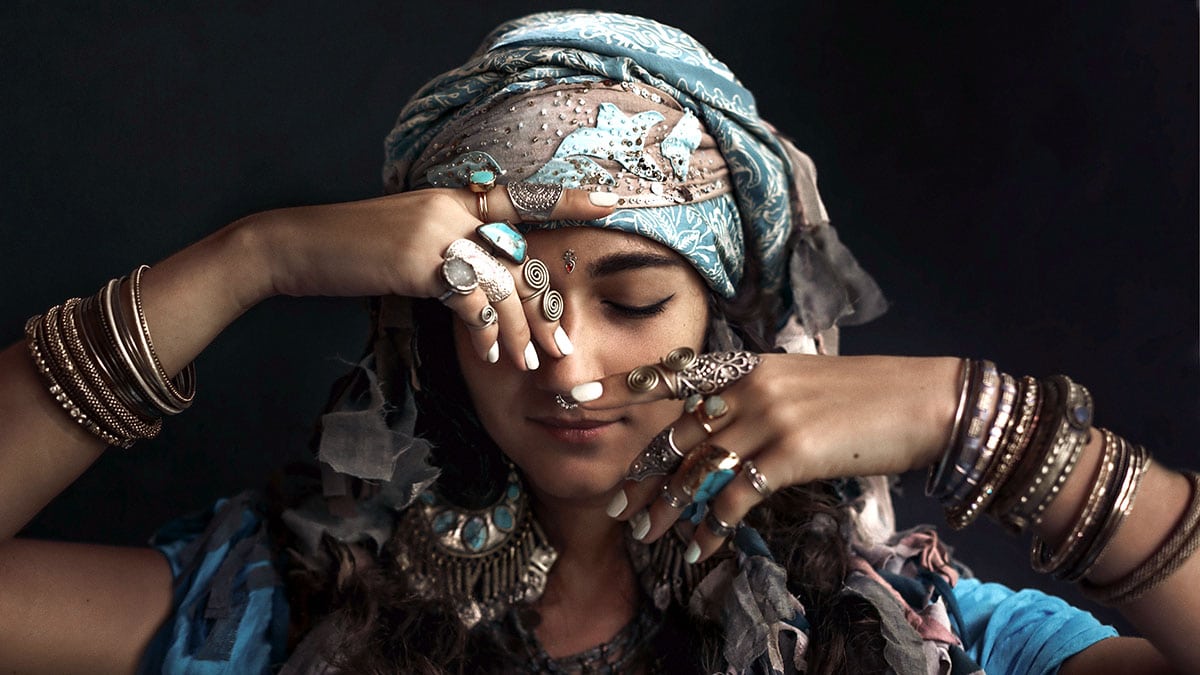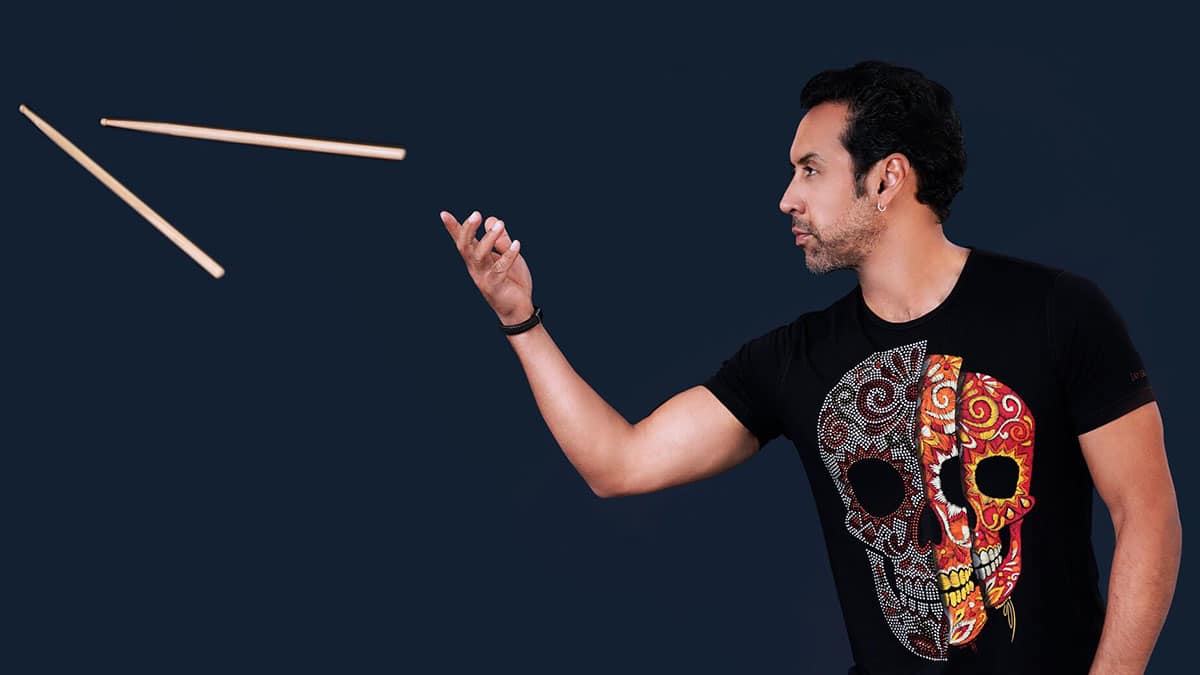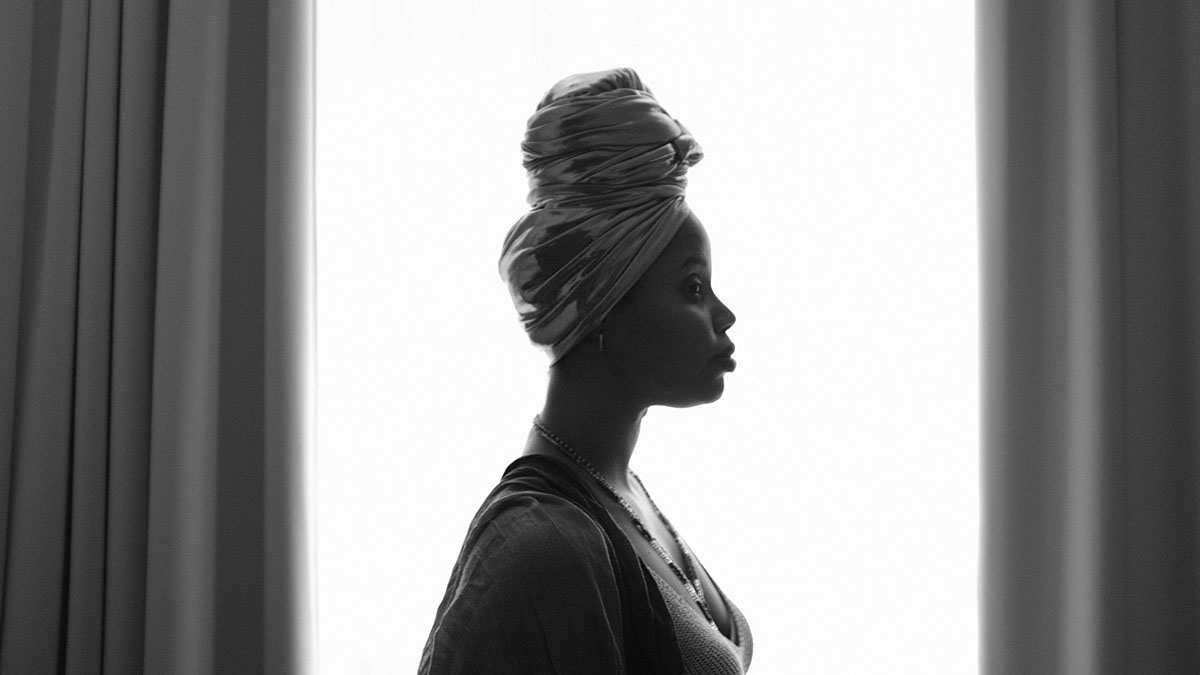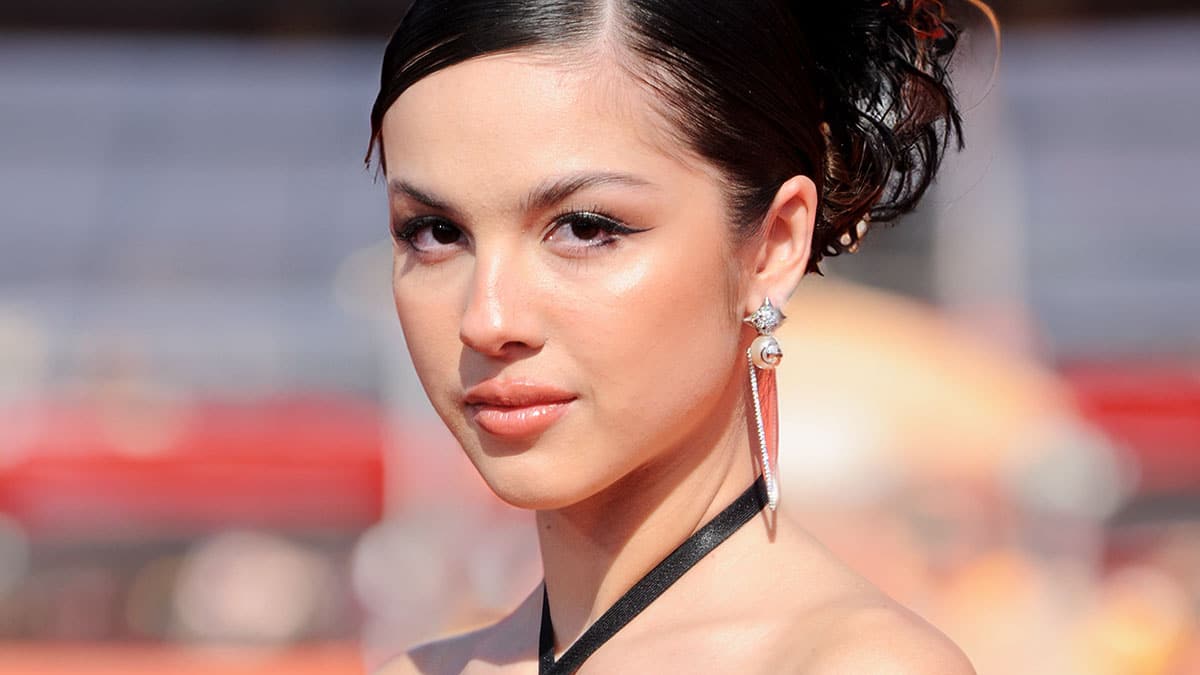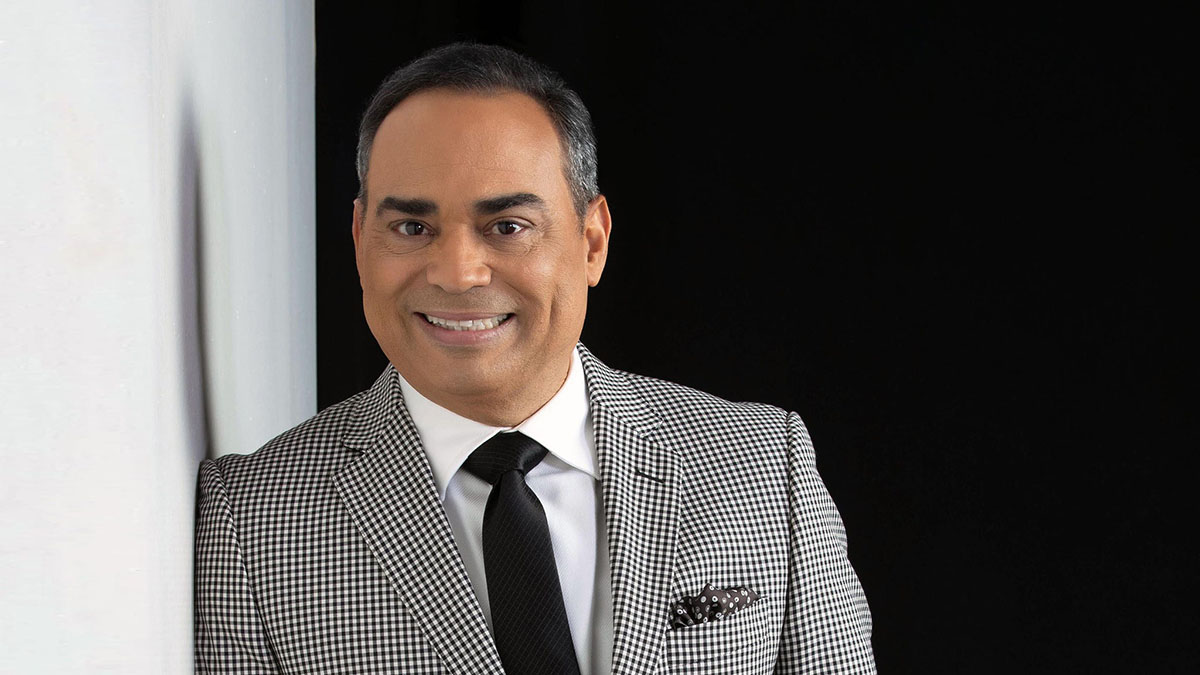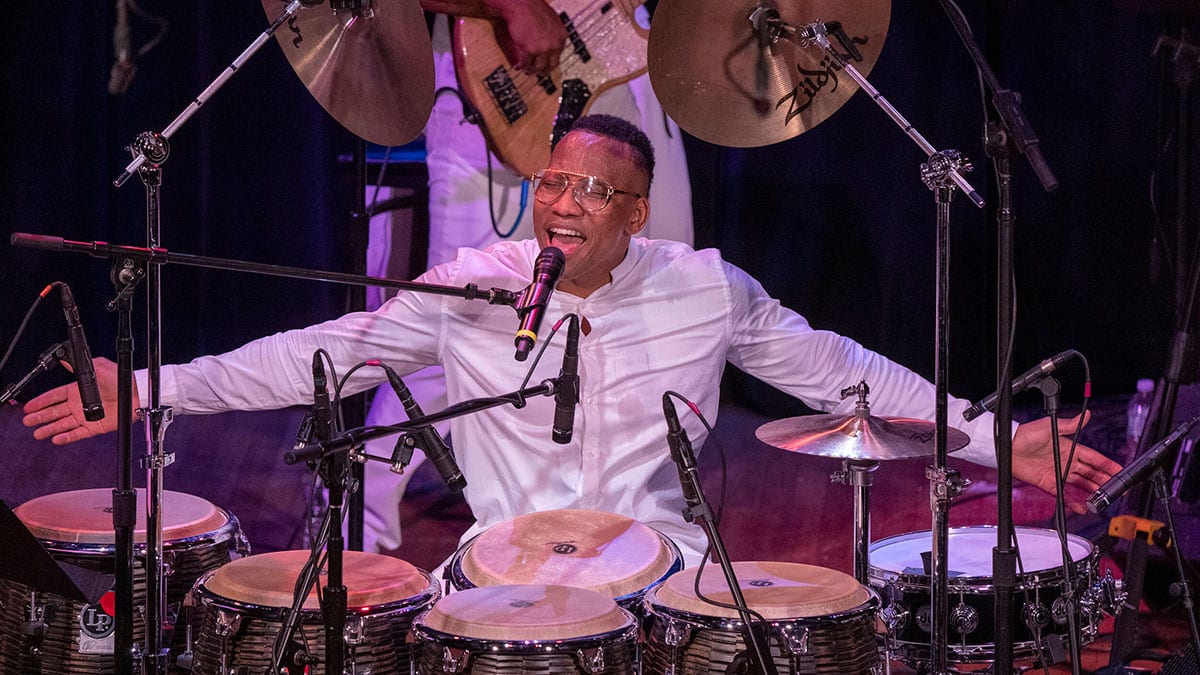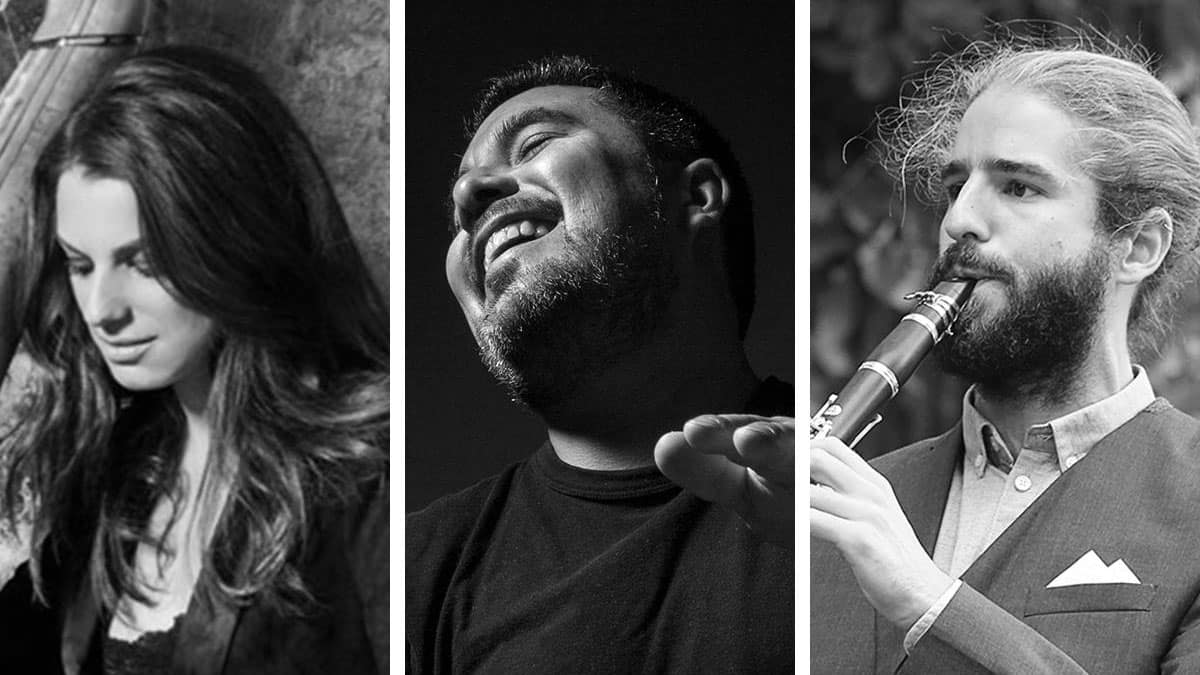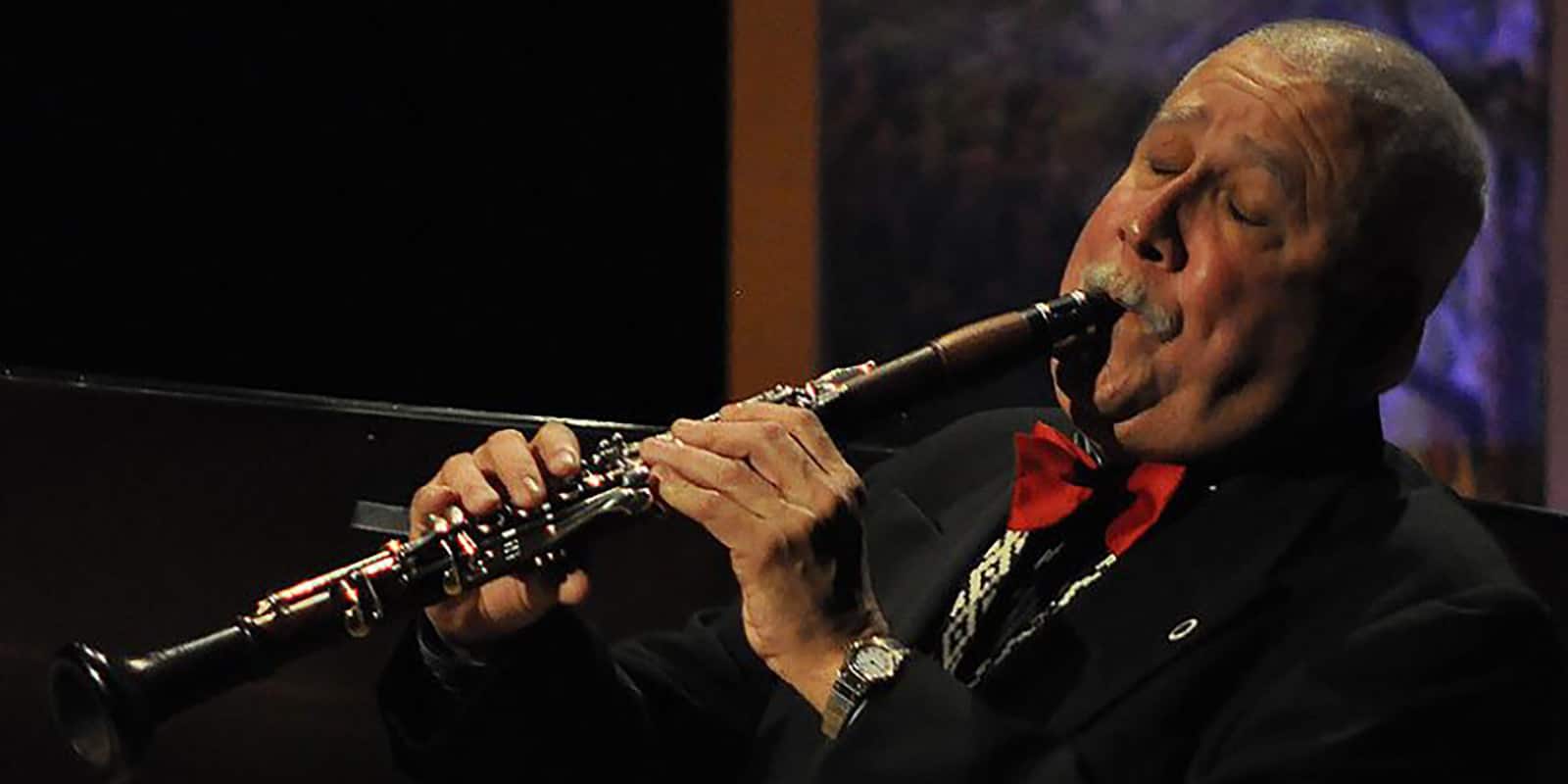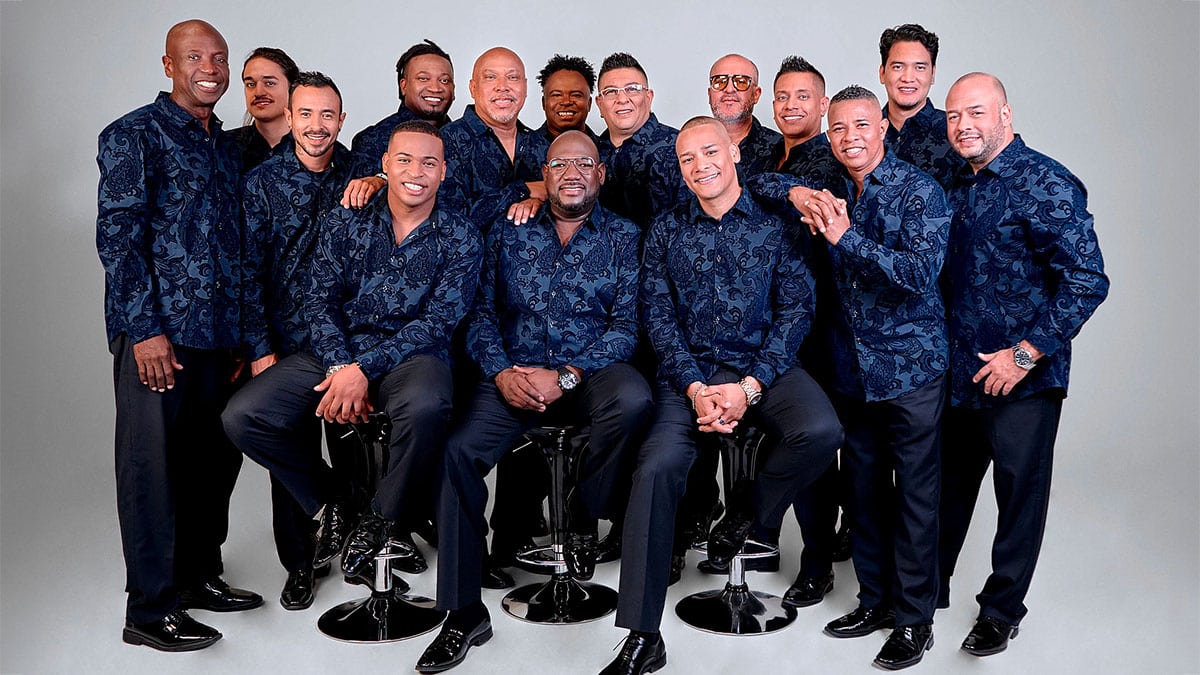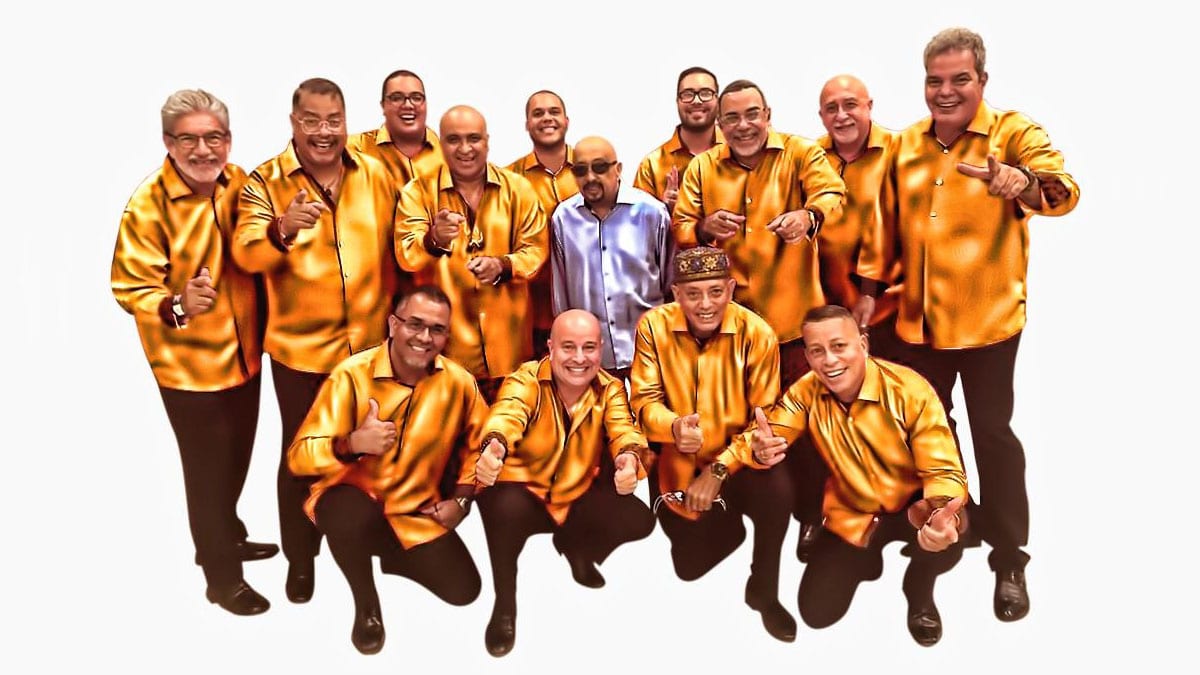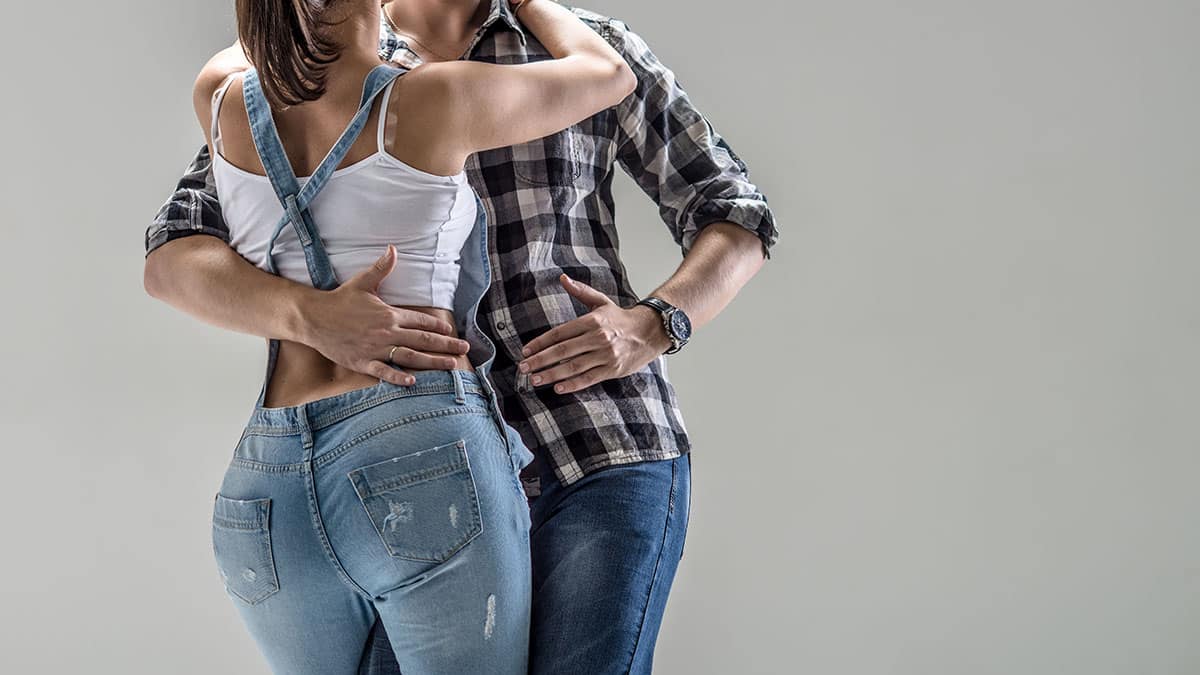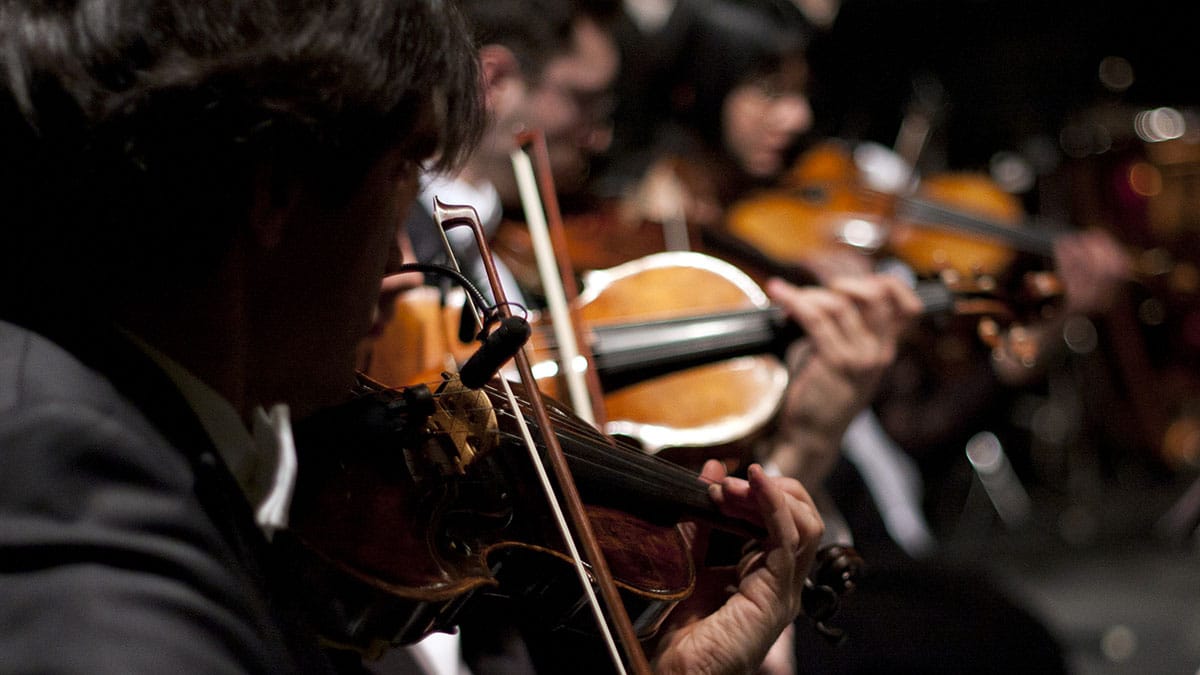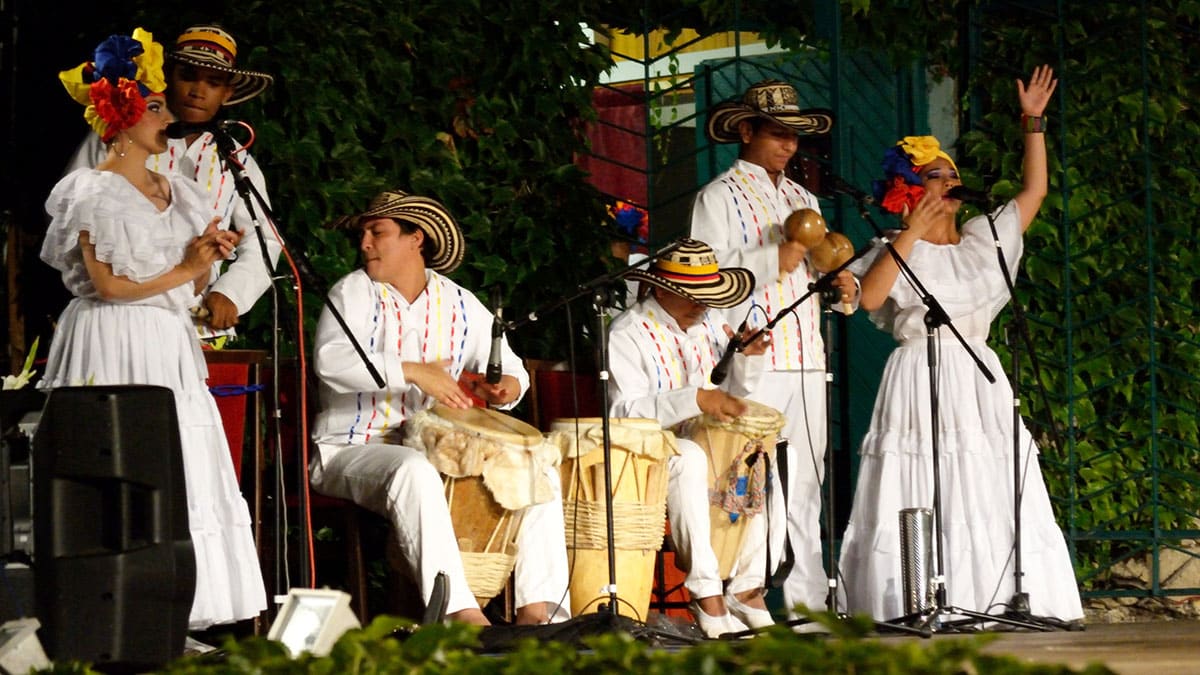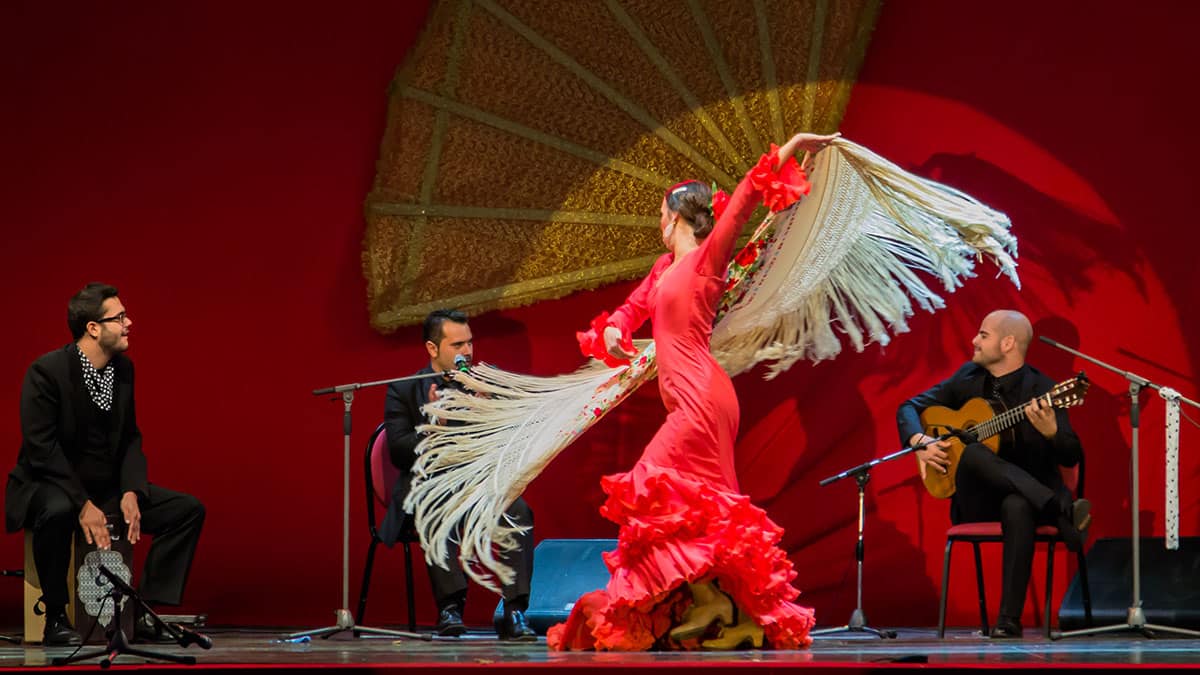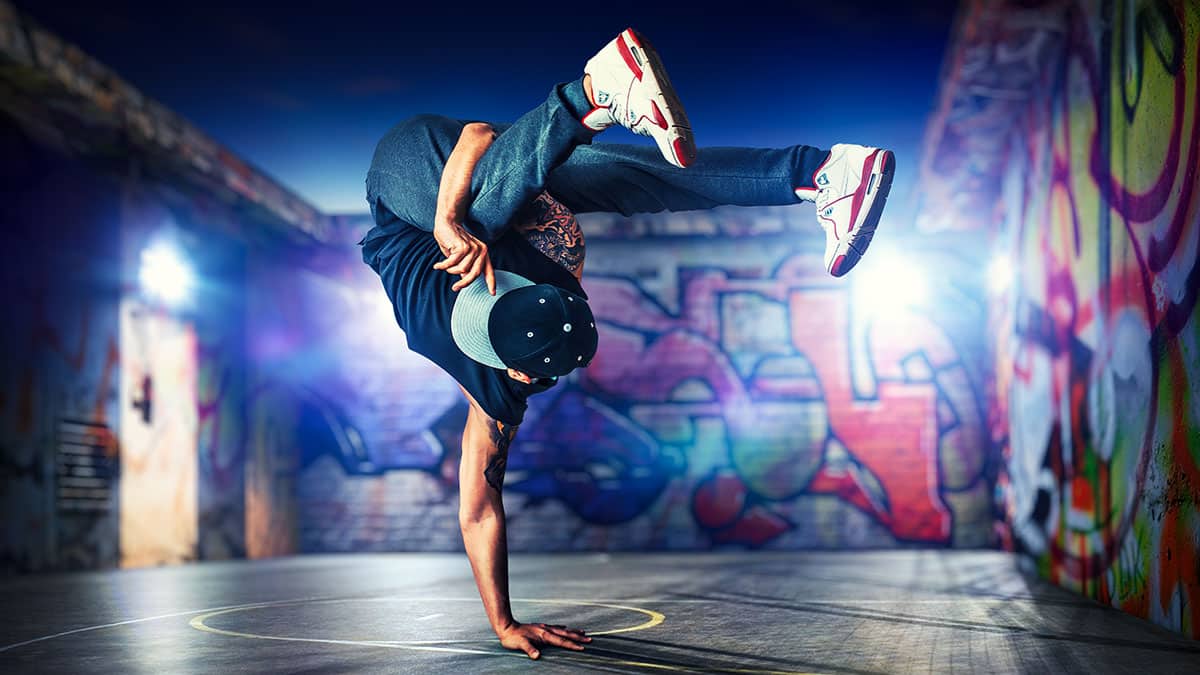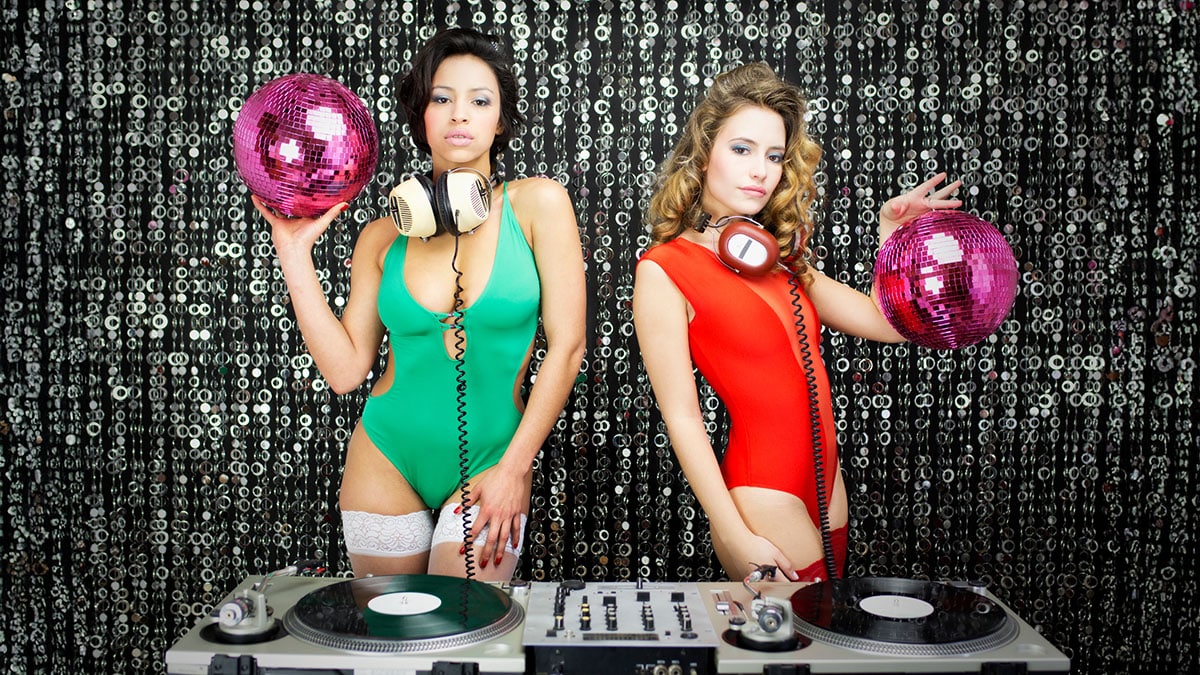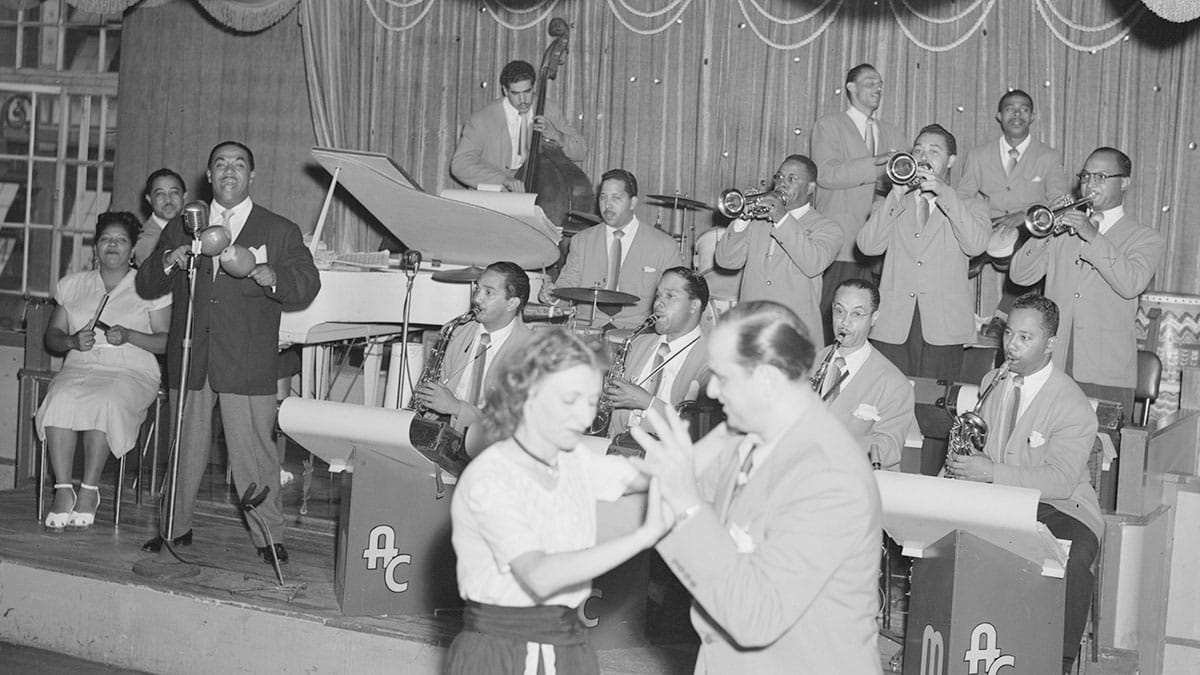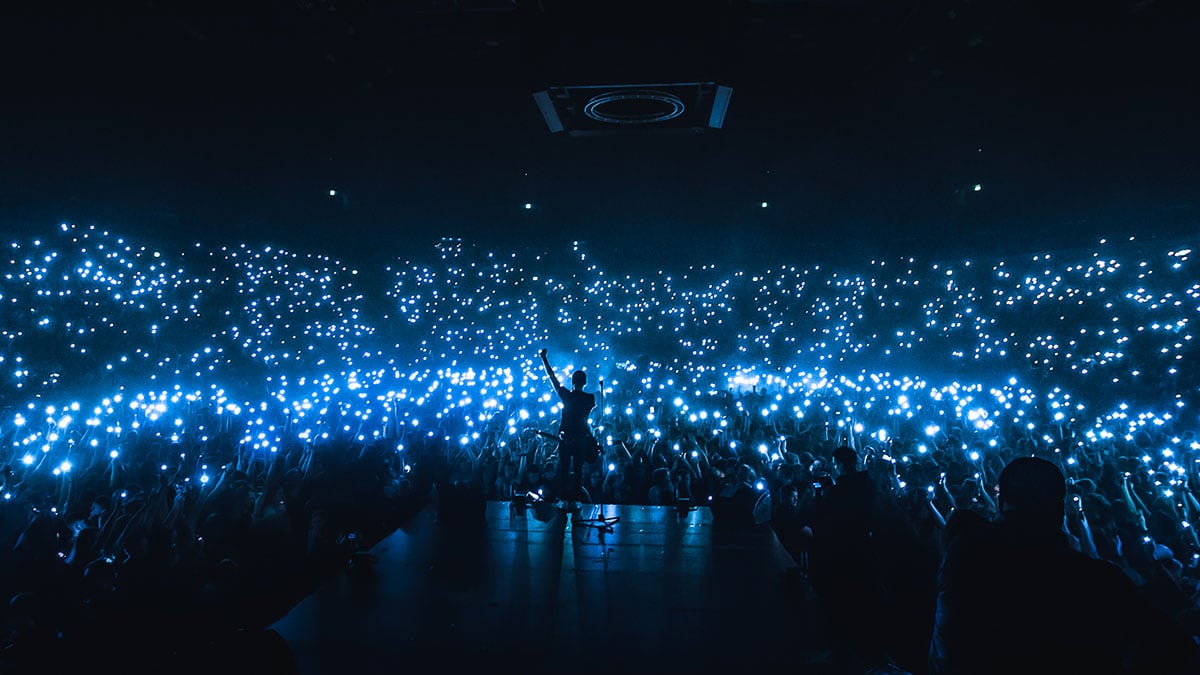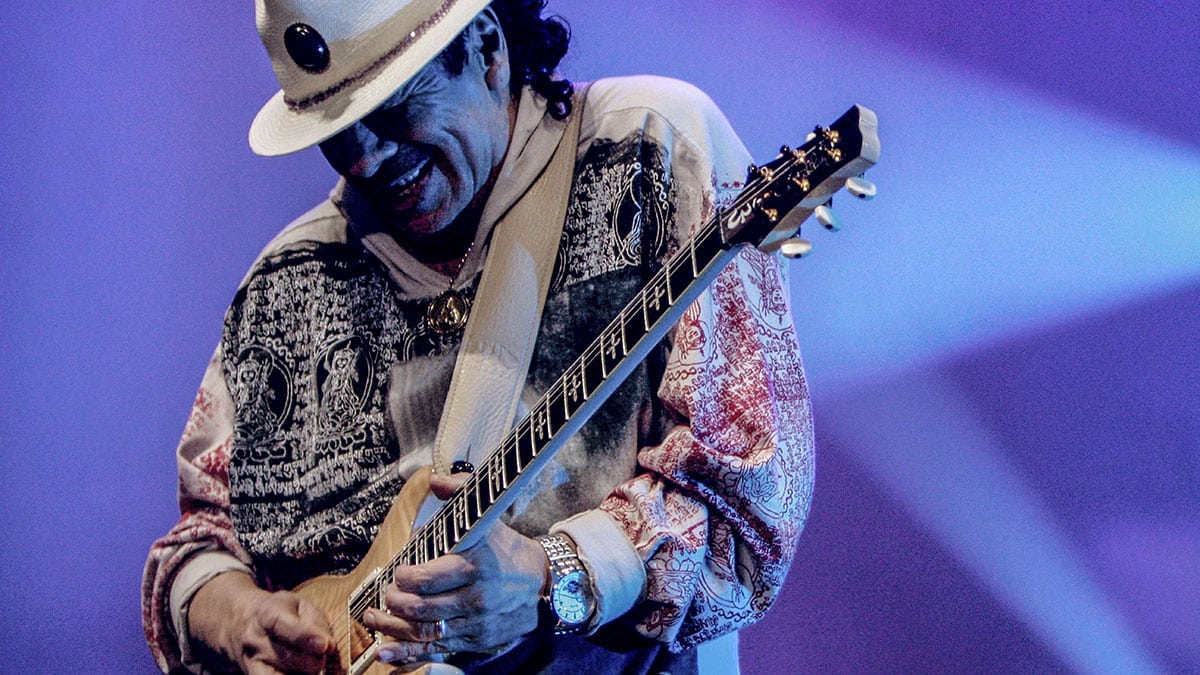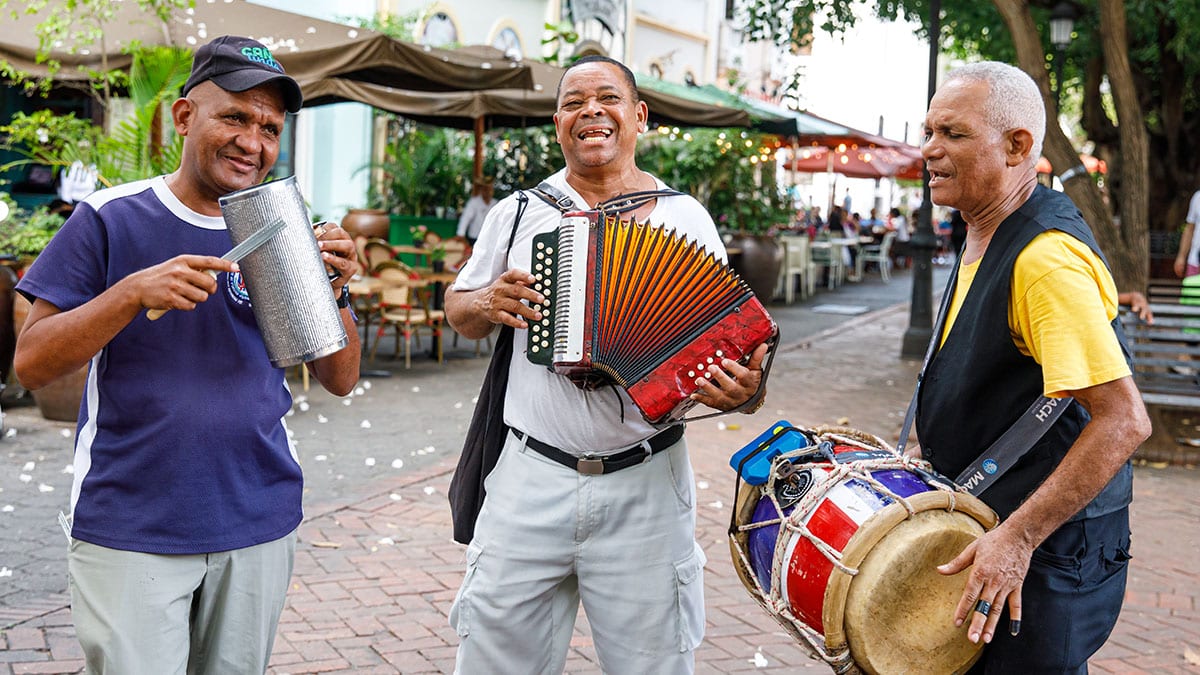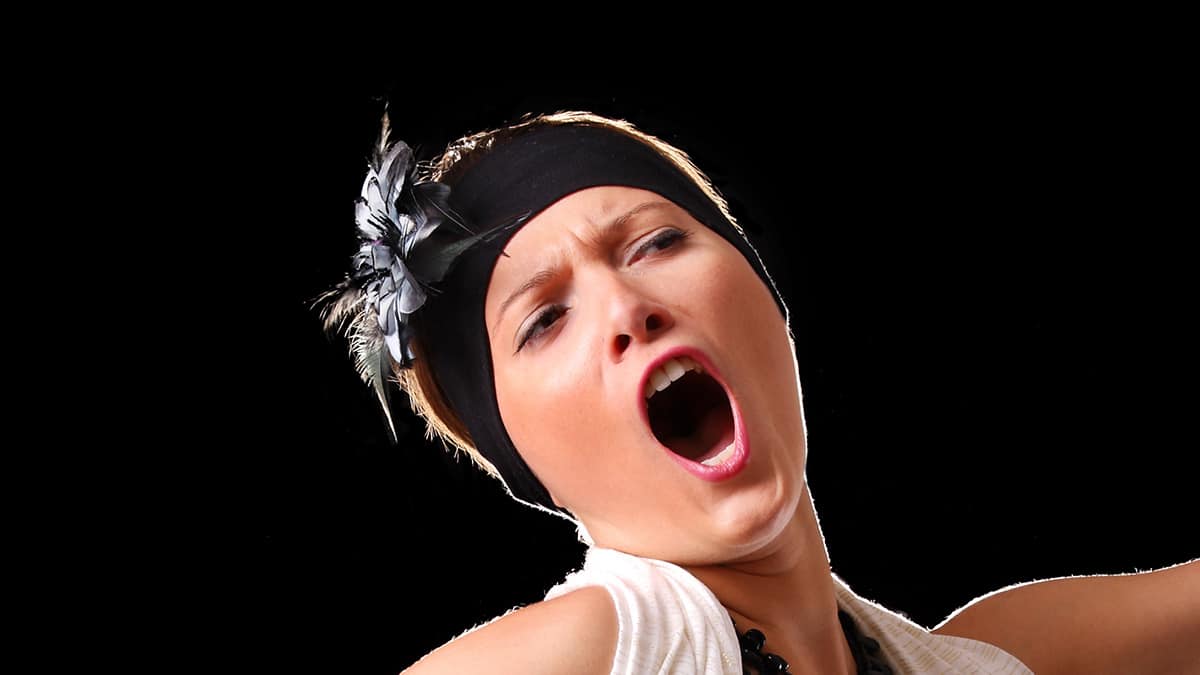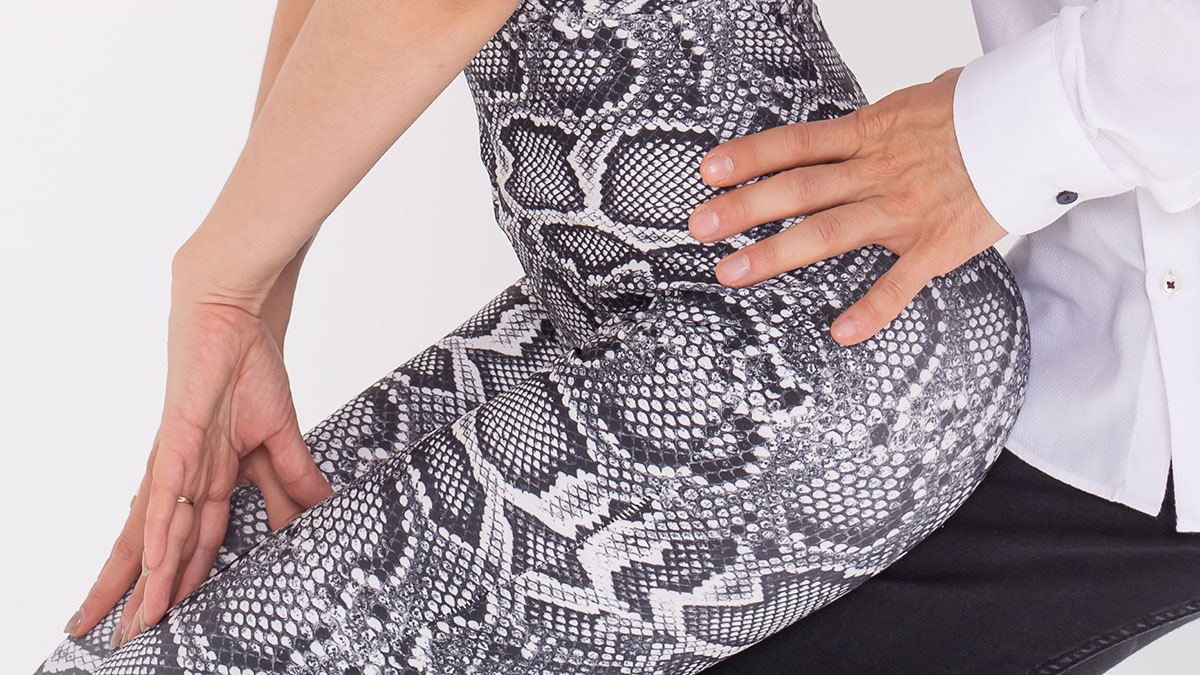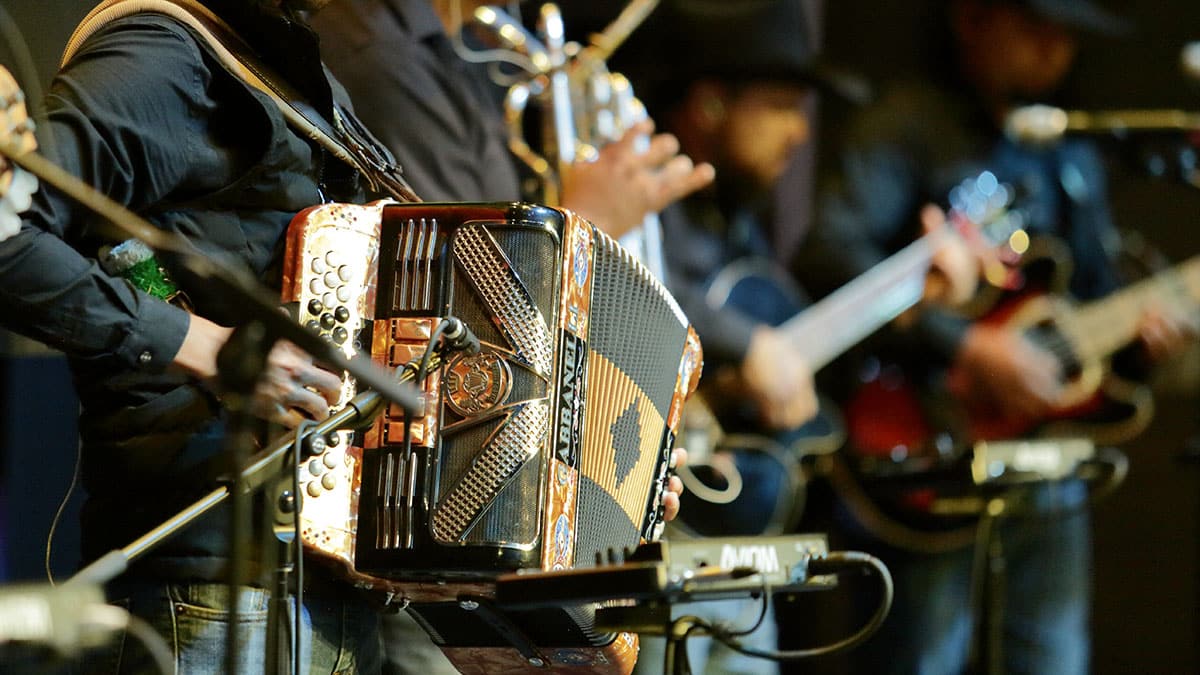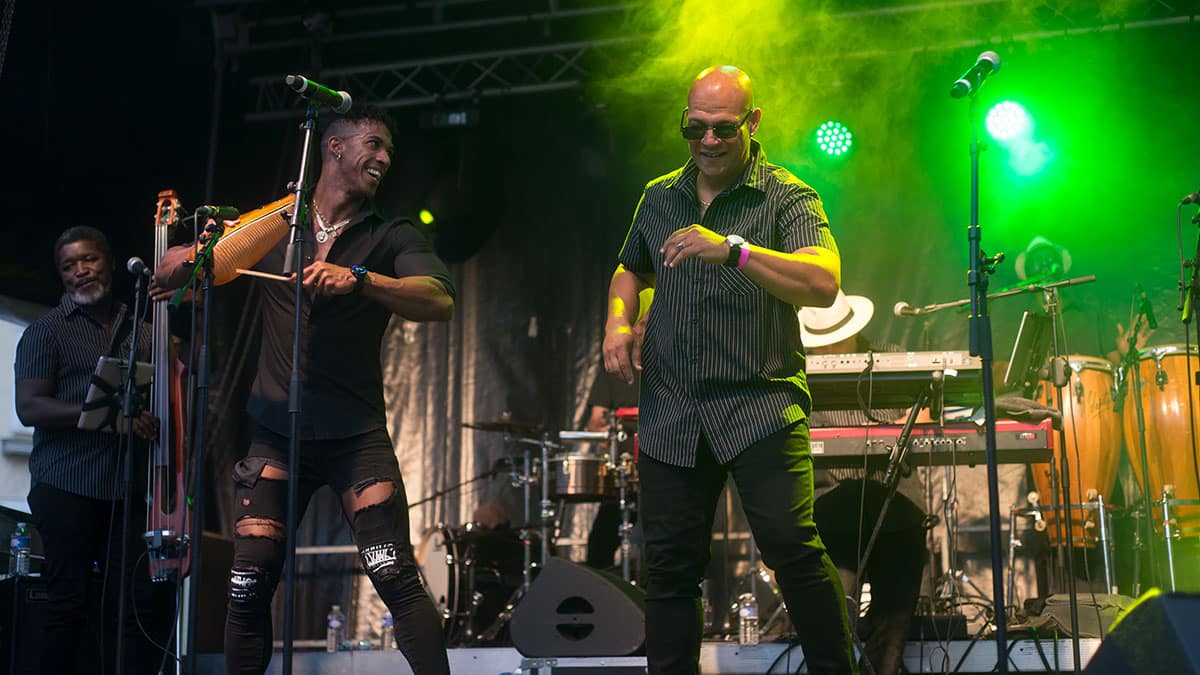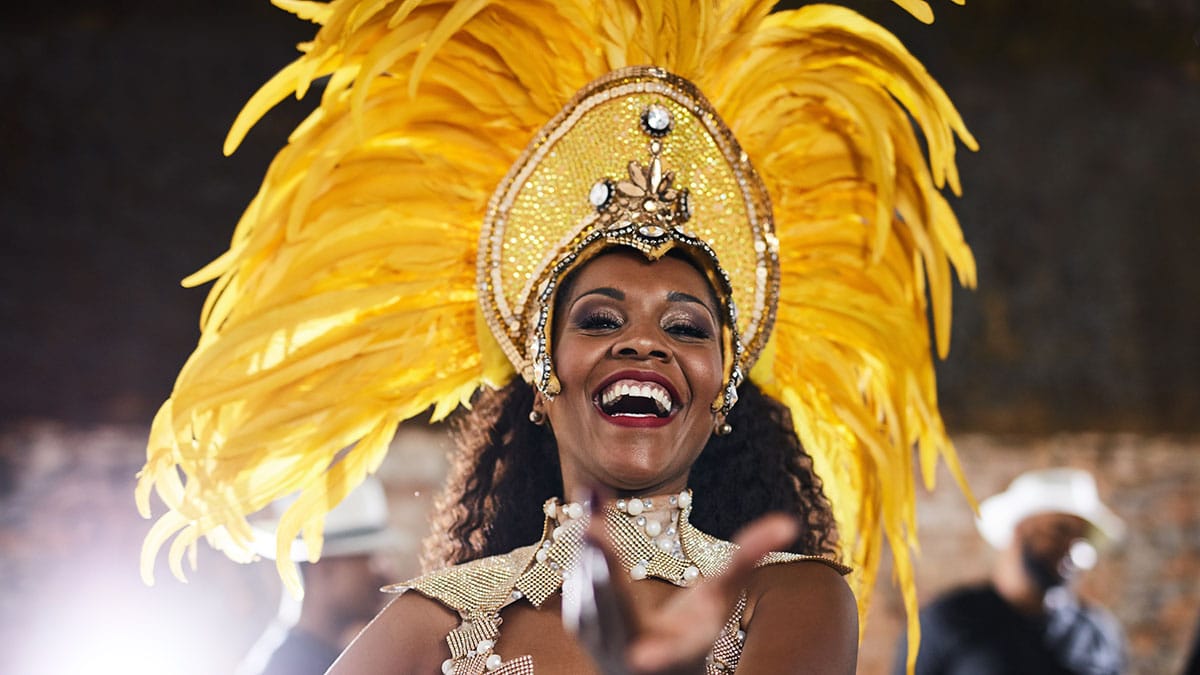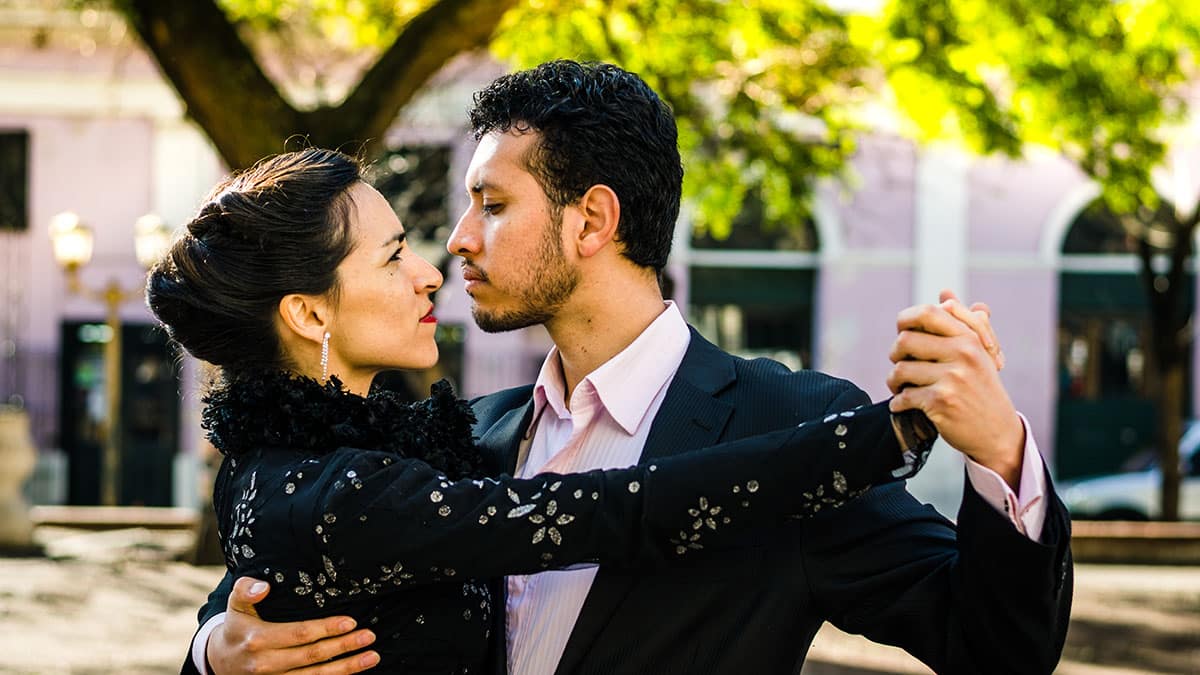Caña Dulce y Caña Brava Plays Mexican Son Jarocho for Carnegie Hall Citywide at El Museo del Barrio
CARNEGIE HALL CITYWIDE, EL MUSEO DEL BARRIO, “El Barrio” East Harlem, Manhattan 🇲🇽 🇲🇽 🇲🇽
David Virelles Nosotros Ensemble featuring Dafnis Prieto Plays Cuban Jazz and Classical New Music Curated by Tania León at Carnegie Hall
CARNEGIE HALL, Midtown, Manhattan 🇨🇺 🇨🇺
Chavela Vargas Didn’t Just Sing Rancheras, She Lived Them
SAN JOAQUÍN FLORES, Heredia, Costa Rica ~ April 17, 1919 🇲🇽
Continue Reading Chavela Vargas Didn’t Just Sing Rancheras, She Lived Them
Tito Puente is Still “The King of Latin Music”
HARLEM, Manhattan ~ April 20, 1923 🇵🇷
Continue Reading Tito Puente is Still “The King of Latin Music”
Snarky Puppy Features Silvana Estrada, Sílvia Pérez-Cruz, Gaby Moreno, and Fuensanta for the World Music Institute at Kings Theatre
KINGS THEATRE, Flatbush, Brooklyn 🇬🇹 🇲🇽 🇪🇸 🇺🇸
Olivia Rodrigo “Guts World Tour” Rocks Madison Square Garden
MADISON SQUARE GARDEN, Chelsea, Manhattan 🇵🇭
Continue Reading Olivia Rodrigo “Guts World Tour” Rocks Madison Square Garden
Gilberto Santa Rosa “Auténtico Tour” Brings Puerto Rican Salsa to Radio City Music Hall
RADIO CITY MUSIC HALL, Rockefeller Center, Manhattan 🇵🇷
Pedrito Martinez Joins Hip Hop Jazz Singer José James at the Blue Note
BLUE NOTE, Greenwich Village, Manhattan José James’ guest, hip hop jazz 🇨🇺 🇮🇪 🇵🇦
DROM, East Village, Manhattan; rumba, timba, jazz 🇨🇺
Continue Reading Pedrito Martinez Joins Hip Hop Jazz Singer José James at the Blue Note
Leyenda Plays Latin Pop Classics with Bridget Kibbey harp, Samuel Torres percussion, and Louis Arques clarinet; for Carnegie Hall Citywide at Our Saviour’s Atonement Lutheran Church
CARNEGIE HALL CITYWIDE, Our Saviour’s Atonement Lutheran Church, Hudson Heights, Manhattan 🇦🇷 🇨🇴 🇨🇺 🇫🇷 🇺🇸
Paquito D’Rivera Plays Classical Latin Jazz with the New Jersey Symphony at New Jersey Performing Arts Center
NEW JERSEY PERFORMING ARTS CENTER, Newark, New Jersey 🇨🇺 ~ 🇦🇷 🇲🇽 🇺🇸
Grupo Niche Plays Colombian Salsa for the New York Salsa Festival at Barclays Center
BARCLAYS CENTER, Prospect Heights, Brooklyn 🇨🇴
PRUDENTIAL CENTER, Newark, New Jersey 🇨🇴
KUPFERBERG CENTER, Flushing, Queens 🇨🇴
La Sonora Ponceña Plays Puerto Rican Salsa at Lehman Center
LEHMAN CENTER, Jerome Park, The Bronx 🇵🇷
Continue Reading La Sonora Ponceña Plays Puerto Rican Salsa at Lehman Center
Latin Music Sponsors
- Carnegie Hall
- Harlem Stage 🇺🇸
- Hostos Center 🇵🇷
- Melvis Santa & Jazz Orishas 🇨🇺
- Metropolitan Opera
- Robert Browning Associates
- Teatro Real (Madrid) 🇪🇸
- World Music Institute
Thank you for sponsoring Latin Music.
Latin Music News
Latin Music is as Diverse as We Are
🇺🇸 🇺🇸 🇺🇸
How We Got the Blues
by “Kíko” Keith Widyolar
Santiago de los Caballeros, Dominican Republic
The blues is the root of most of the popular music and dances of the United States. That’s according to Robert Farris Thompson, Yale University art historian (1932-2021).
The blues is not about being sad, it’s about turning suffering into joy. Marginalized communities suffer more, and that is where culture is born. At birth, most Latin music is considered bad, naughty, and low-class. Playing it can get you beaten, arrested, or worse. Eventually people realize what good fun we’re having, and want all they can get.
Latin music and dance are always about finding freedom, in every way possible. All human culture, including European classical music (which started Latin by the way), begins with religious tradition, but that’s another story.
A Rumba is Forming in the Field
Our story begins with rumba, a party. Cuban rumba isn’t African, it’s what the first Africans in Matanzas, Cuba did as soon as their hands were free. It’s voice and rhythm. Indigenous Peoples were doing similar things, so the two flowed together naturally.
People do pretty much the same things around the world and across time, because we are all human. And that is the thesis of New York Latin Culture Magazine.
Music and dance are the core of traditional Latin life. NEA Jazz Master Eddie Palmieri gave perhaps the most succinct description of what we call Latin music. He didn’t mention Indigenous, but as a Puerto Rican, that would be the speaker’s point of view.
The Spaniard brought the African.
Eddie Palmieri at the 92nd Street Y in 2016 ~ New York Latin Culture Magazine. 🇵🇷
The African put everyone to dance.
In the States, they took away the drum,
and we got the blues!”
Congo Square
Once upon a time, Caribbeans from Indigenous, European, and African Ayití (the Indigenous Taíno heartland also known as Hispaniola) came together in Congo Square, New Orleans. (By the way, maracas and the güiro are Indigenous.)
Eventually the colonizers took away the drum, and we got the blues. We also got gospel and ragtime. Call-and-response and syncopation are signatures of African and Indigenous culture.
Putting yourself in the middle of a call-and-response chorus will make your hair stand on end. It’s the most beautiful experience, a spiritual ecstasy. It’s being part of a community.
Like the “Ave Maria,” we often sing to the saints. When we call the saints, the community responds. The community itself is sacred, and that’s what Latin music is all about.
Syncopation is the upbeat. Europe is on the downbeat. But if everyone plays the downbeat, we’re all doing the same thing. That’s good for armies, but not very good for a party. The upbeat (think reggae guitar chops) is in between two downbeats. It lifts the spirt and opens two more spaces for someone else to jump in. The upbeat is open to a community of two or a million. It keeps creating more space.
Watch a rumba or a song get started. The rhythm starts, someone begins to sing, maybe someone starts to dance. More dancers jump in, and suddenly the whole room lifts. It doesn’t literally levitate, but the energy in the room jumps up. Everyone starts to smile.
The same thing happens when a couple who don’t know each other start to dance. There’s a little bit of fumbling. She may push back at him a little. Then suddenly, they are one, and gone.
All That Jazz
Some time after Congo Square got shut down, classically-trained, “Creole” musicians and some street kids in New Orleans put it back together in all that jass. Yes, it’s about getting down, but in more ways than you think. That swing is Caribbean tumbao, the natural swing in an African Diaspora woman’s walk, but there is a direct line between love, family, God and the universe itself.
Americans and Latins have been in an endless dance ever since, learning and borrowing from each other, swinging back and forth. Whatever happens in the African Diaspora community swings into the Latin community, and eventually swings back. When we stop creating, the world will end.
In World War I, the French recognized something of themselves when James Reese Europe’s Harlem Hellfighters Marching Band played “Le Marseillaise.”
They didn’t believe such heavenly sounds were possible, and thought it was a trick. It’s no trick. It’s just opening yourself to the universe whether you call it the Great Spirit, the passion, Caribbean trance, flamenco duende, dervish whirling, nature, science, riddim, or flow. (Silicon Valley spends millions trying to find flow, but you can find it for free in dance.)
The Harlem Renaissance was The Jazz Age
The Harlem Renaissance of the 1920s-30s was a flowering of Black Arts that changed everything whether you are Black or not.
Jazz defined modern American culture in the 1920s and launched global youth culture in 1940s Times Square. The NYPD wondered what all the kids were doing. They were dancing in the streets, just like Latins.
Afro-Puerto Rican Arturo Schomburg was told in school in Puerto Rico that he had no culture, so he began collecting it. His collection became the New York Public Library’s Schomburg Center for Research in Black Culture, and he was its founding curator. ¡WEPA!
Mani…
In the Latin world, music is used as advertising. In 1930, much of the world heard Latin music for the first time on the radio through the Victor recording of “El Manisero.” The first global Latin hit was based on a peanut vendor’s selling song.
It was a son-pregón, but was marketed as rhumba because that was easier to understand. It had very little to do with rumba.
A pregón is a street vendor’s selling song. You used to hear them all over New York as vendor’s pushed their carts down the street. The last place we know of to hear a pregón is at the vegetable market in Manhattan Chinatown. Vendors sing, “I have the sweetest oranges, the sweetest oranges you’ve ever seen.” They sing in Chinese, but it’s the same thing. “Maniii.”
Bebop & Cubop, The Caribbean Hero Twins
Uptown in the 1930s, Chick Webb and Benny Goodman were battling bands at the Savoy Ballroom, one of the first places where everyone could mix without fear.
In the 1940s, Dizzy and Machito birthed bebop and cubop at Minton’s in Harlem and the Park Avenue Ballroom in “El Barrio” East Harlem. Basically, Machito’s music director Mario Bauzá and Dizzy reunited the Caribbean hero twins, separated at birth by colonial divisions. By the way, Bauzá played on that old recording of “El Manisero.”
While his mother swooned to Carlos Gardel’s tango, a young dancer named Tito Puente was sneaking out of El Barrio to listen to jazz across Fifth Avenue in Harlem. He dreamed of playing like Goodman’s drummer, Gene Krupa, who played like he was possessed.
Puente would inspire generations dancing on his timbales like he was possessed. In Caribbean culture, there is nothing bad about being possessed. It is considered a great honor.
Celia Couldn’t Go Home, So She Made the Whole World Her Home
Celia Cruz couldn’t go home to Cuba, so she just popularized Cuban music all around the world.
She is not only the “Queen of Salsa.” More than anyone else, Celia Cruz is the “Queen of Latin Music.” She will live forever in the hearts of the people, and especially the dancers.
You can follow much of Latin music’s trajectory from 1950 when Celia replaced Puerto Rican singer Myrta Silva in La Sonora Matancera ~ to her “La Negra Tiene Tumbao” in 2001.”
¡Azucár! Oh. ¡Agua!
Do You Mambo?
In the 1950s, the Palladium Ballroom was going out of business, so it decided to try letting in Latins. All of America went crazy for the Cuban and Puerto Rican mambo of Machito, Tito Puente, Tito Rodríguez and others.
The Palladium was another one of the first places that dancers could mix without fear. Frank Sinatra and Marlon Brando sat on the floor with everyone else. The only thing that mattered was how good you could dance. We can dance because in the old days, it was how we prayed.
The Soul Train and Boogaloo
The 1960s was an era of Civil Rights. The idea that we could be Black and Proud inspired the Black Arts Movement, another flowering of Black culture. We call it the Harlem Renaissance 2.0.
We got more rhythm and blues and soul which are the foundations of a lot of popular music. We also got boogaloo, a blend of latin with rhythm and blues, usually sung in English. “I Like it Like That” too. You can dance “The Twist” to Latin boogaloo.
Meanwhile Symphony Sid kept mixing jazz and latin downtown at the Village Gate in Greenwich Village. The old sign is still there upstairs on the corner.
Our Latin Thing in El Barrio
Whatever happens in the Black community, soon echoes into the Latin community. If we could be Black and Proud, then we could be Latin and Proud too. It was the first time that it was cool to be Latin in the States.
In the 1960s-70s, Boricua (Puerto Ricans) in El Barrio and El Bronx, and some artists from around the Latin world, made New York Salsa from “Our Latin Thing.” Fania Records became the Latin Motown and inspired another generation. “Mi Gente: Ustedes” (My People: You).
Cali Pachanguero
That hot salsa jumped to Colombia, where it mixed with other flavors, including more African Diaspora and Indigenous lines in Palenque, Cartagena, Barranquilla, and Cali.
Salsa is cultural in Cali, “La capital de la salsa.” Most everyone dances and dances very well. Cali has a stage form of salsa, in the same way that flamenco has a stage form in New York. People put their kids in dance school to learn their cultural heritage.
South of the Border
Mexico and South America have more things going on that are mixed with regional Indigenous cultures. That mix includes German and Czech polka which becomes Regional Mexican banda and norteño.
In the States, we are more familiar with African American culture, but south of the border there is another Indigenous universe that also has its own African culture inside it.
Tudo bem? Bim Bom, Bim Bim, Bom Bom
Brazil is another universe unto itself. Blues, gospel and jazz have more North African characteristics like melisma warbling, and the blue note because North Africa is closer to the United States. Candomblé, samba and bossa nova have more Central African characteristics because Central Africa is closer to Brazil.
But we all mixed together everywhere in the Americas, and we all share the same roots in Mother Africa. Africa is mother because all humanity originates in Africa.
Samba is related to carnival and carnival is related to all Latin music because in the Colonial Era, carnival was the only time people could celebrate their own African Diaspora or Indigenous traditions.
Listen to a samba drum line. It’s a Brazilian drum, that looks a lot like an American marching drum. But listen to the rhythm. That’s African rhythm. It makes you want to dance.
And if you know anything about rumba, gagá, bomba, plena, cumbia, or samba drumming; you’ll recognize your own patterns in these other traditions. Different branches ~ same roots.
In the 1950s-60s, as samba evolved into bossa nova, American jazz musicians went south and the new music mixed with jazz. Few people heard of it until the 1962 bossa nova concert at Carnegie Hall. Bossa nova is still the world’s most popular music after The Beatles.
Rocking the Free World
Latin rock started with Mexican bands singing American or English rock in Spanish. In 1958 Richie Valens’ rock version of “La Bamba,” a traditional Mexican wedding song, rocked the world.
Actually Kongo musicians were singing “La Bamba” in Veracruz as early as 1683.
Rock Nacional
Bands began composing their own music in Spanish in Argentina around 1965. Latin kids were thrilled to hear popular music with their own sensibilities from Charly Garcia, Leon Geico, and others.
Authorities tried to suppress rock in Argentina, but finally gave up, said it’s Rock Nacional, and now you work for the government.
Disgusted rockers like Gustavo Santaolalla just up and left. In Los Angeles, Santaolalla became the godfather of latin alternative (Rock en Español fusions), and went on to win two Academy Awards.
In 1970, Carlos Santana rocked the world with his version of Tito Puente’s “Oye Cómo Va.” It all fits together because we all have the same roots.
One Love
The upbeat goes on through reggae, hip-hop, reggaeton, and latin trap. Reggae has clave in it (the African Diaspora bell pattern that is the root of rumba).
Bob Marley didn’t just sing “One Love,” he lived it and even after one political party tried to kill him, Marley brought the two parties together on stage. That is love.
Da Riddim of Hip-Hop
DJ Cool Herc (Clive Campbell) brought his Jamaican soundsystem culture to 1520 Sedgewick Avenue in The Bronx on August 11, 1973 and started hip-hop culture.
Grandmaster Flash figured out how to turn the drum “break” into the whole song on two turntables. Afrika Bambaataa brought the break downtown to the punkers and rocked the planet.
The divine works in mysterious ways. There were originally three hip-hop crews in The Bronx. The day after the New York City Blackout of 1977, there were a hundred.
African American kids started hip-hop, but Latin kids brought their parents’ cool Palladium Ballroom dance moves into it. It’s that tumbao again.
Oh and a bunch of Puerto Rican bomba moves are the same as hip-hop moves. We don’t know who influenced who, but the similarity is striking. The Bronx is still Puerto Rican and Black. That is some WEPA cool. Oh, and there’s some really good Puerto Rican house happening in Brooklyn now. Get down.
Shout Out to the Ladies
Women are the guardians of culture and the ladies have been back leading every step. Why do you think men even dance ~ to please women. They say, “behind every great man, is a great woman” and it’s true.
Clive Campbell gets the credit for starting hip-hop, but it was his sister Cindy Campbell who decided she wanted to have a back to school party for the neighborhood, organized it, promoted it, and styled her brother’s clothes for the evening. She is the beginning.
Hip-hop is the yin and the yang. Go girls! Love and respect!
Conga
In 1985, Emilio and Gloria Estefan’s Miami Sound Machine got huge by crossing over with “Conga.” They kept asking to sing in Spanish, but record companies wouldn’t let them.
After Gloria almost died in a bus accident, the Estefans got even bigger when she began signing in Spanish with 1993’s “Mi Tierra.” She is Miami, but is singing about Cuba.
Gasolina, Despacito, Mi Gente
Reggaeton starts with Jamaican reggae. Jamaicans finishing the Panama Canal brought their music with them. In the Latin world, businesses play music for advertising. Panamanian bus drivers serving Jamaican barrios started hiring kids to promote their bus services. When the kids weren’t around, they played cassette tapes. Do you remember cassettes?
While DJing parties in New York, “El General,” a Panamanian kid studying business, noticed the party jumped more when he rapped in Spanish than in Jamaican patois, so reggae en español was born.
Brooklyn Puerto Rican Vico C brought that mixtape culture to the caserios (public housing) of Puerta de Tierra on the island of San Juan, Puerto Rico in 1988. He got Boricua rapping in Spanish.
Daddy Yankee named the genre and lit the world on fire with “Gasolina” in 2004.
In 2017, Luis Fonsi’s “Despacito” got the whole world dancing and singing along in Spanish. By the way, the video was shot in La Perla, the old shanty town outside the walls of Old San Juan. It’s a very special place.
In 2018, J Balvin and Willy William showed that “Mi Gente” aren’t only in New York City. We’re in Medellín, Colombia and we can dance too. The song channeled the Fania All-Stars hit “Mi Gente” sung by Héctor Lavoe in 1974.
La 42
Dem Bow is getting down out of Santo Domingo, Dominican Republic. It’s coming from Capotillo 42, one of the most underprivileged barrios in the Caribbean. Latin music is always born in the hardest places.
Most Dominicans don’t dare go, but we spent a night there at a teteo (car meet). All we saw was the friendship of the barrio, the family love of the barrio, and a bunch of kids with great style and some serious moves. The dem bow is great. ¡Capotillo cuarenta y dos!
The World’s First Fusion Reactor
Now the kids are mashing it all together with urban hip-hop, house, reggaeton, bachata, latin trap and more. Urban music is the world’s first working fusion reactor. All that clean energy produces a lot of water ~ as sweat.
Back in Spain, Rosalía launched a global flamenco renaissance by fusing flamenco with urban music. One of her latest singles is a bachata with Ethiopian Canadian singer The Weeknd. Mëstiza DJs are bringing flamenco into the house. La Mala Rodríguez is rapping in Spanish with English house bands.
Harlem Renaissance 3.0
In New York, the African Diaspora community is flowering again. Black and Latin artists are getting opportunities we never had before. We call it the Harlem Renaissance 3.0
WE are the mix. When WE stop creating, the world will end. Until then, WE just dance.
The Latin Family
The defining characteristic of Latin culture is strong family ties. If you get to experience Latin music in its natural habitat at home with your family, you may realize that even after all this time, it’s still just a rumba, a party.
The blues is about turning suffering into joy because that is what the rumba is about. Together, we put everyone to dance in a Latin party of family, faith, community, and love.
The call of the drum means, “we are gathering together in peace.” Jazz, rock, reggae, hip-hop, salsa and reggaeton beats still mean the same thing.
Paz e amor (peace and love).
.. . .. E-le-le, le-le-le .. . ..

